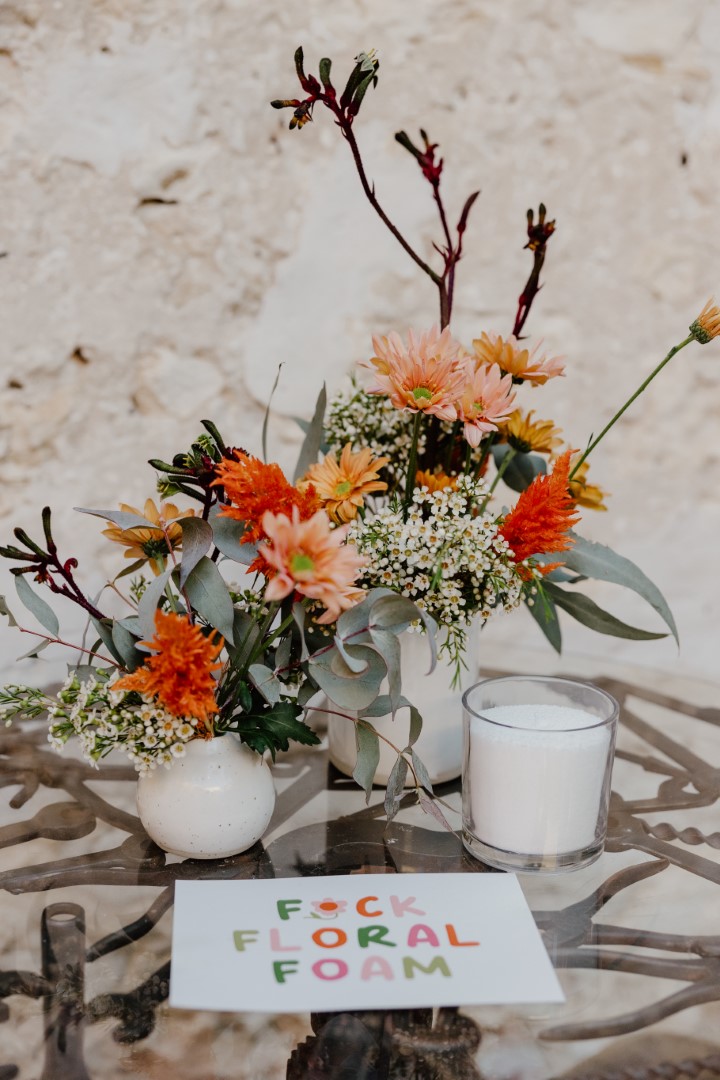
We’ve said it before and we’ll say it again – we hate floral foam. It’s a toxic, single use microplastic that does more harm than good. But shockingly, it’s still widely used in modern floristry. But, we want to change that.
Fremantle Design Week is a biennial festival of designand design ideas. The theme for 2024 is transition. In challenging times, how do we transition the way we think about our world to design a positive future?
Together with Donna from The Freo Florist and Tara from Euka Floral Design – both sustainable florists in Boorloo (Perth) – we hosted an event to discuss how florists need to transition into sustainable design practices and councils and venues need to ban floral foam from a community level.
The event was held at the iconic Moore & Moore building in Fremantle. Moore & Moore, a wedding venue itself, was fully supportive of our proposal and vision.
“Floristry is a highly visible, short-lived and generally very expensive service/product. Florists are essentially people who really, genuinely love and feel deeply connected to nature. This combination leads to tension – customers want us to make something awesome for them (every time!) and we don’t want to disappoint them. We have to reconcile our own business reputation with our connection to the earth.Coming together to explore new ideas, to learn new things, and to share the process is strengthening and inspiring. It’s the only way forward, and I am deeply grateful to each person who attended the event. I hope that the ripples will be felt for generations of florists to come.”Donna ~ The Freo Florist

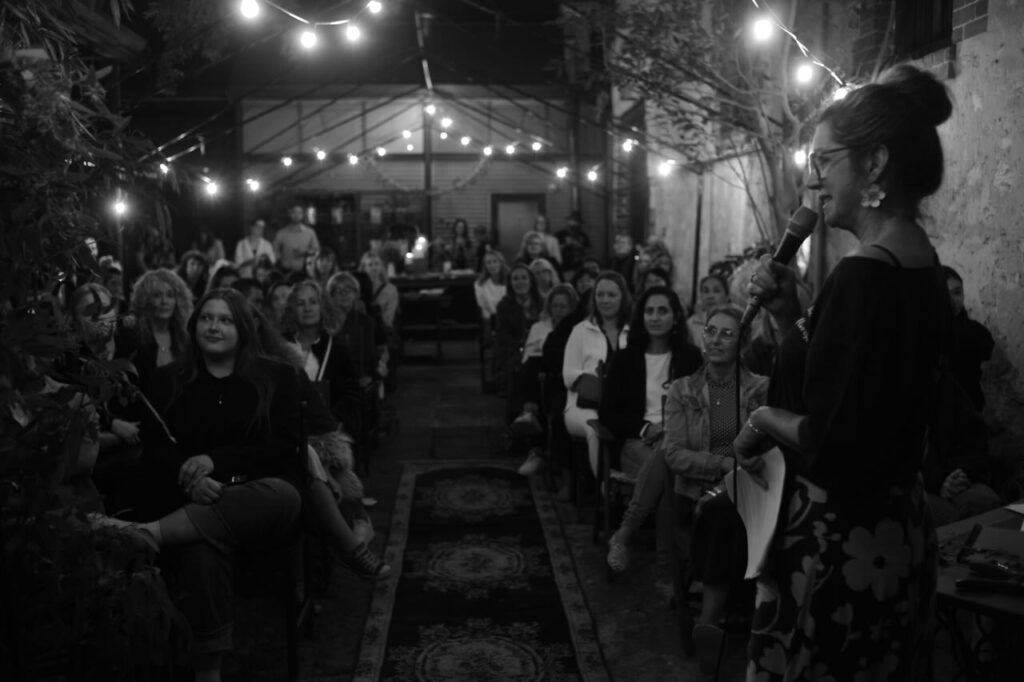
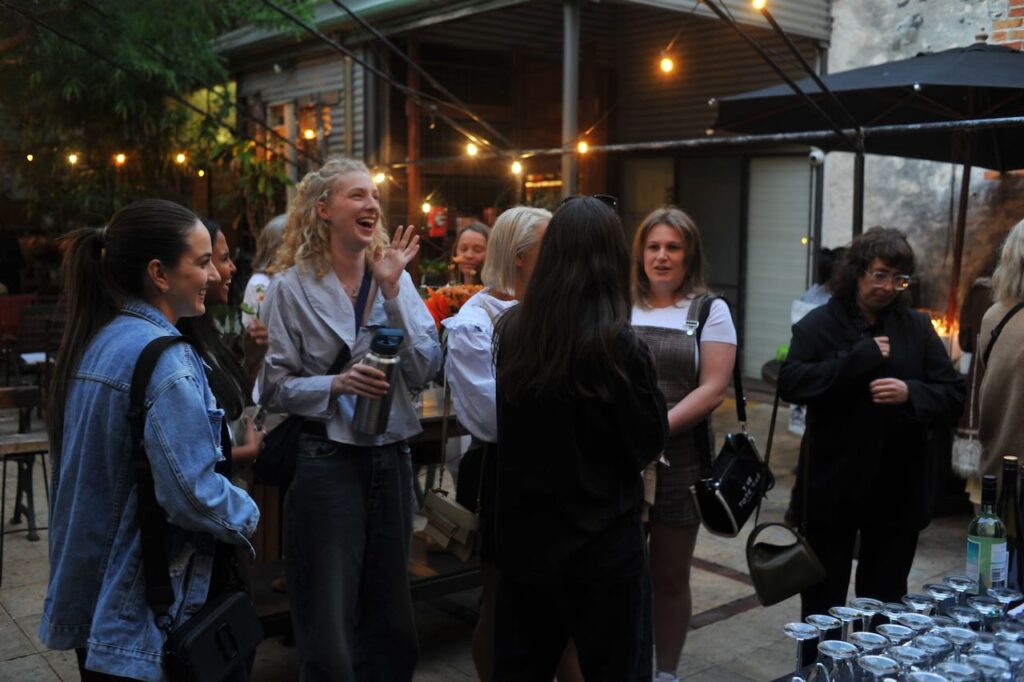

THE WHY
We’ve already mentioned that floral foam is bad – you can read more about that in our previous blog post “Why Your Florist Needs to Ditch Floral Foam”.
An excerpt from this blog post summarises why:
Floral foam facts:
- It is a single-use, microplastic from the phenol formaldehydes family
- It contains hazardous chemicals
- Water containing foam fragments should not be poured down the sink or into stormwater as it is harmful to marine life
But it’s not just the product itself that’s bad – it’s how floral foam has changed the general impression of how flowers need to be looked after. Floral foam makes the flower appear fresh while in fact it is being chemically preserved through the uptake of formaldehyde. The once organic, natural flower has now become toxic waste (not even compostable). The work we need to do is a grass-roots re-imagining of what flowers are, what they need and how we interact with them.
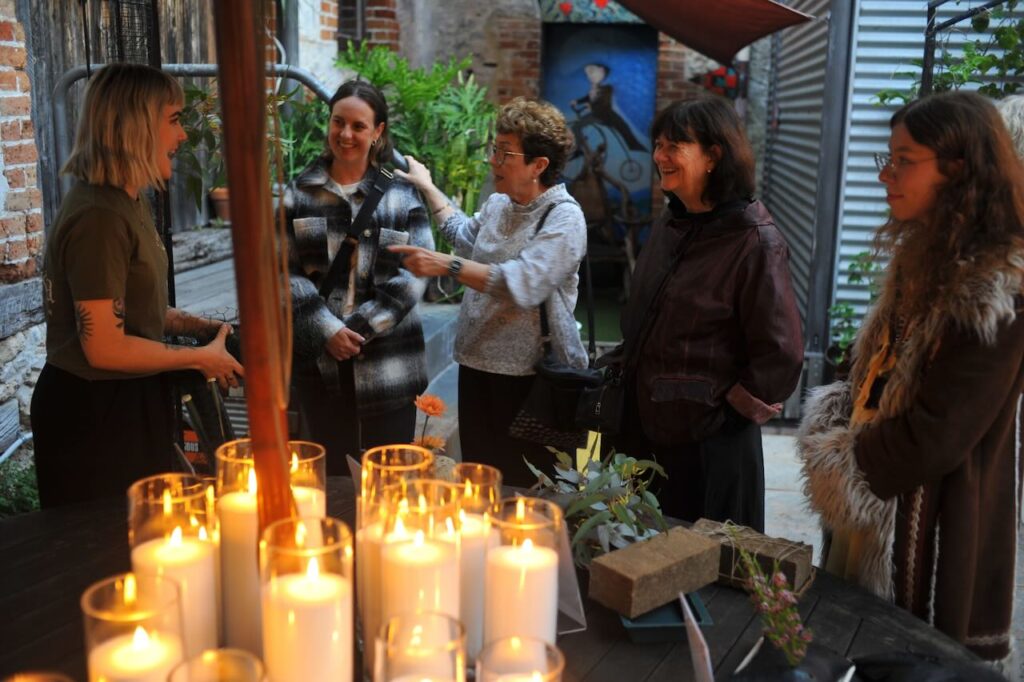
Tara from Euka Floral Design explaining to guests the available floral-foam alternatives
THE HOW
We think there are two key elements to this transition:
Councils ban the product at a community level. This is very similar to banning plastic straws and takeaway containers, which many councils have successfully implemented. From this community ban, venues will then need to manage and educate their vendors that their venue and their community has a foam-free policy.
Florists need to educate themselves with sustainable practices. The Sustainable Floristry Network is a great resource for information. And florists, like Donna and Tara, are more than happy to share their wisdom with other florists who are eager to learn.
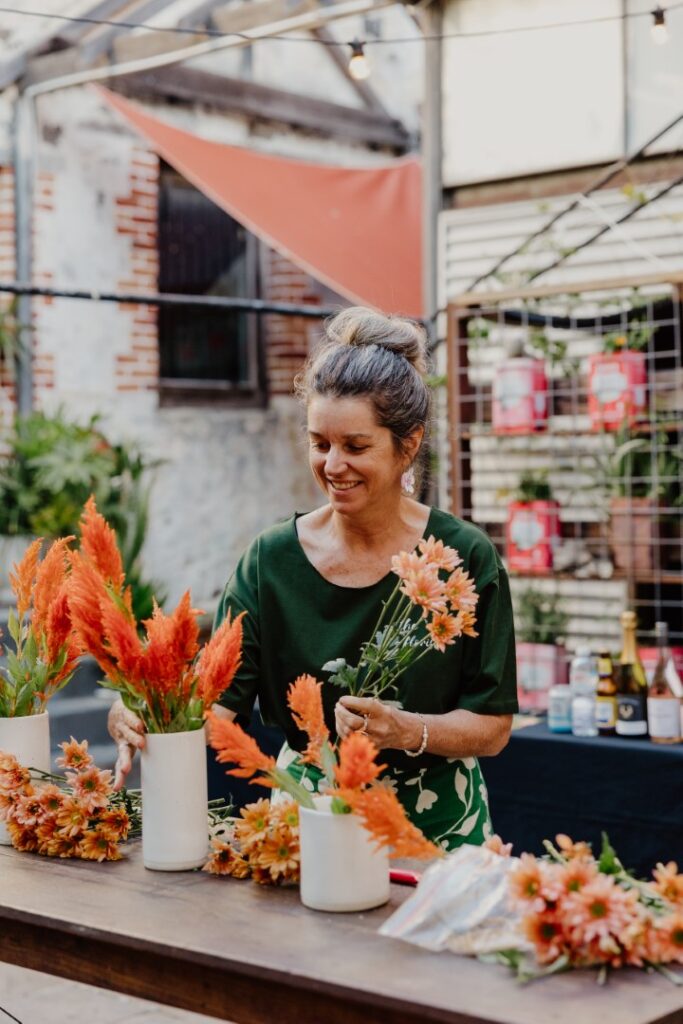
Donna from The Freo Florist
THE WHAT
At the Floral Futures event, we had a table that displayed all the safe and sustainable alternatives to floral foam. Guests were able to play with the product and arrange flowers using each tool.
Unlike floral foam, all of these products are reusable or compostable which becomes more economical in the long run.
The tools on show were:
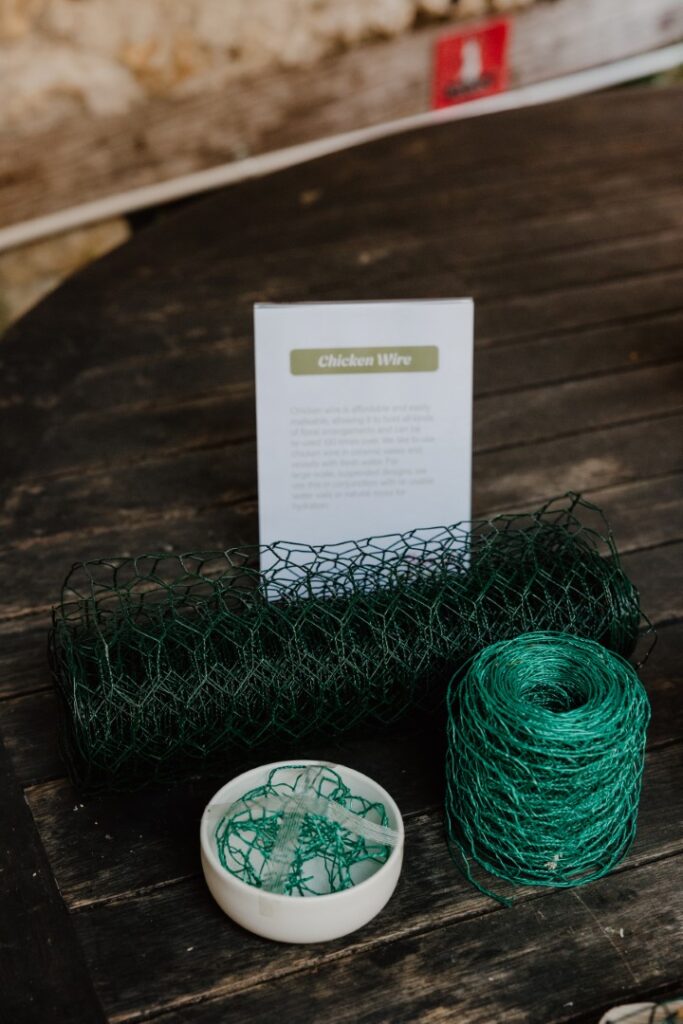
Chicken wire for sustainable floristry
Chicken Wire
Chicken wire is affordable and easily malleable, allowing it to hold to all kinds of floral arrangements and can be re-used 100 times over. We like to use chicken wire in ceramic vases and vessels with fresh water. For large-scale, suspended designs, we use this in conjunction with re-usable water vials or natural moss for hydration.

Vessels and vases for sustainable floristry
Vessels and vases
From ancient civilization to modern times, flower vases, pots and vessels have evolved through many different designs and materials – all of which play an important role in displaying nature’s creations. They are artful, versatile, easy-to-use and very hydrating which helps with longevity.
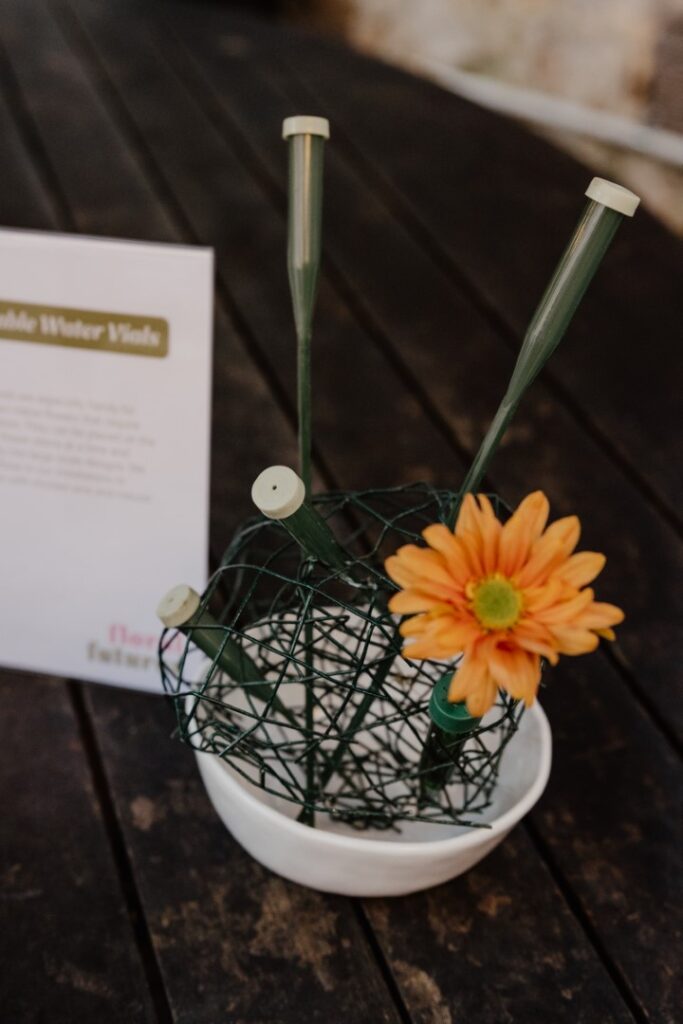
Water vials for sustainable floristry
Reusable Water Vials
Reusable vials are especially handy for delicate, non-native flowers that require extra hydration. They can be placed on the end of 2-3 flower stems at a time and blend easily into large-scale designs. We often use these in our installations in conjunction with chicken wire and natural moss.
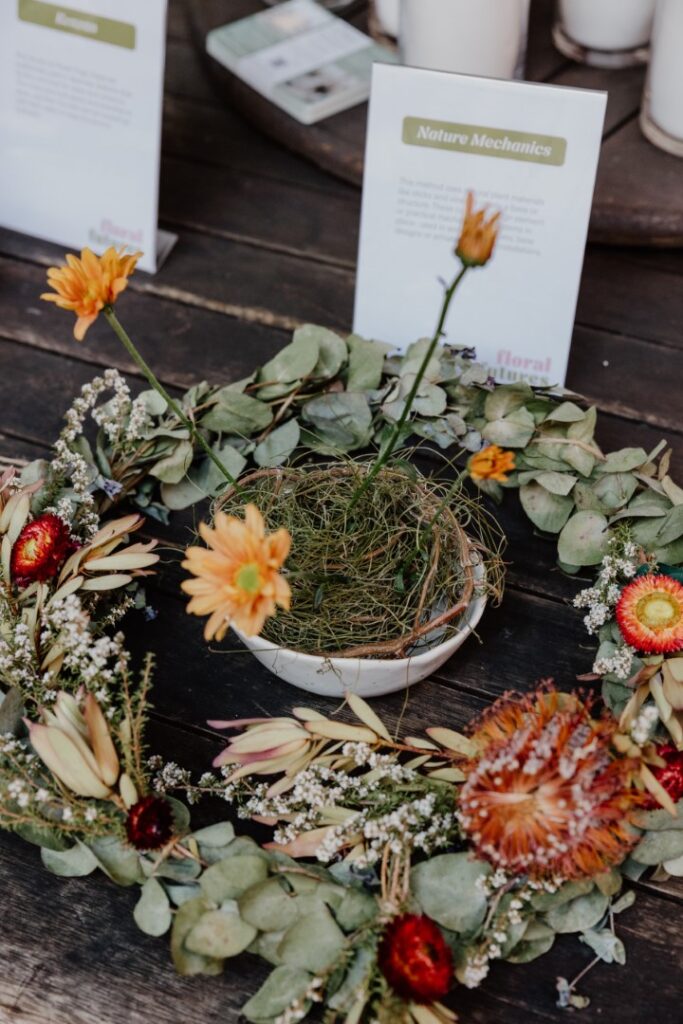
Natural mechanics for sustainable floristry
Nature Mechanics
This method uses natural plant materials like sticks and vines to create a vase or structure. These can be a design element or practical mechanic to hold stems in place. Used in wreaths, bouquets, base designs or armature for large installations.
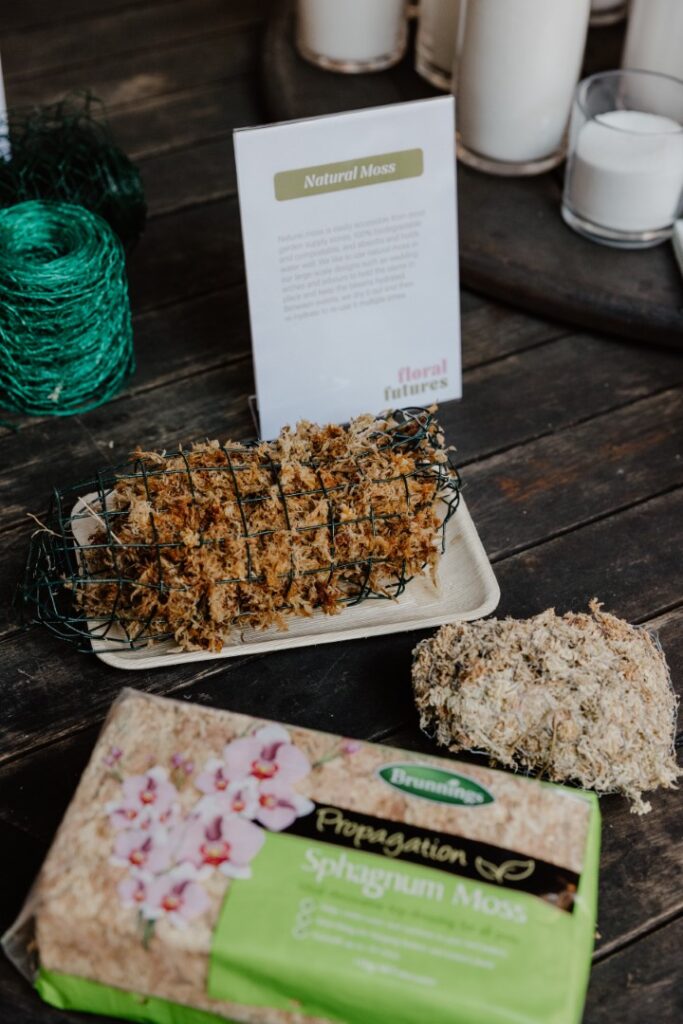
Natural moss for sustainable floristry
Natural Moss
Natural moss is easily accessible from most garden supply stores, 100% biodegradable and compostable, and absorbs and holds water well. We like to use natural moss in our large-scale designs such as wedding arches and arbours to hold the stems in place and keep the blooms hydrated. Between events, we dr it out and then re-hydrate to re-use it multiple times.
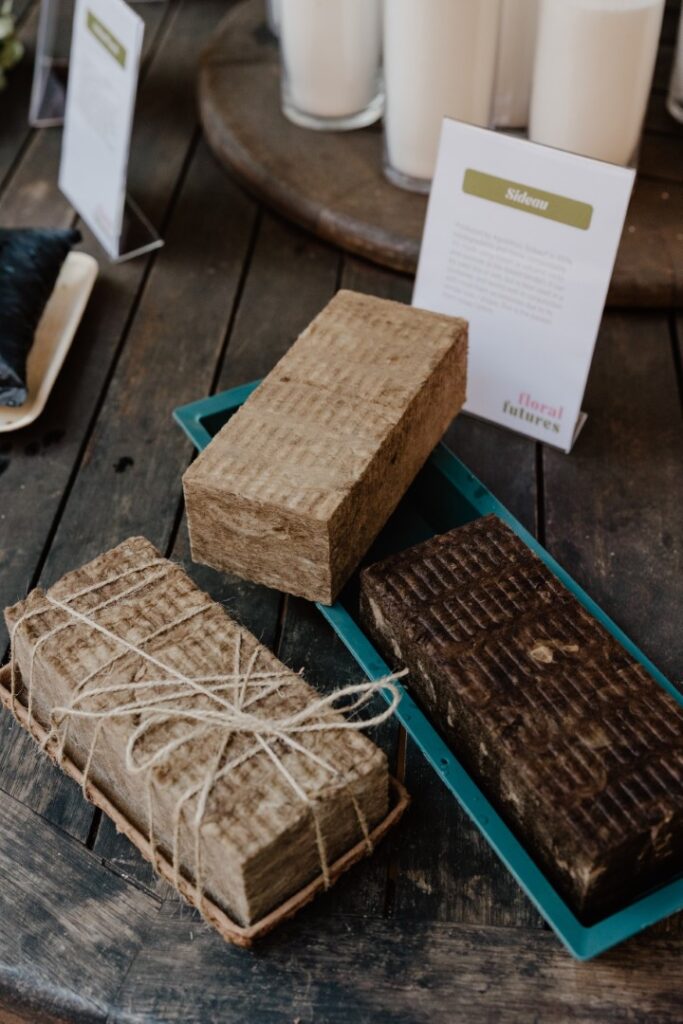
Sideau Natural Blocks for sustainable floristry
Sideau
Produced by Agrawool, Sideau ® is 100% biodegradable and home compostable. It’s made using basalt (a volcanic rock) and sucrose (a bio-based binder). It can be used dry or wet, but is best used in a container, and works well in conjunction with most foam accessories due to its similar size/shape. This is the easiest foam-swap option.

OshunPouch for sustainable floristry
OshunPouch
Invented by New Age Floral, OshunPouch ® is 100% biodegradable and home compostable, and is best suited for day-of arrangements. The pouch membrane is made from plant-based starches. Inside, it contains and blend of certified organic, 100% natural coco coir and other natural ingredients, which expands when hydrated.
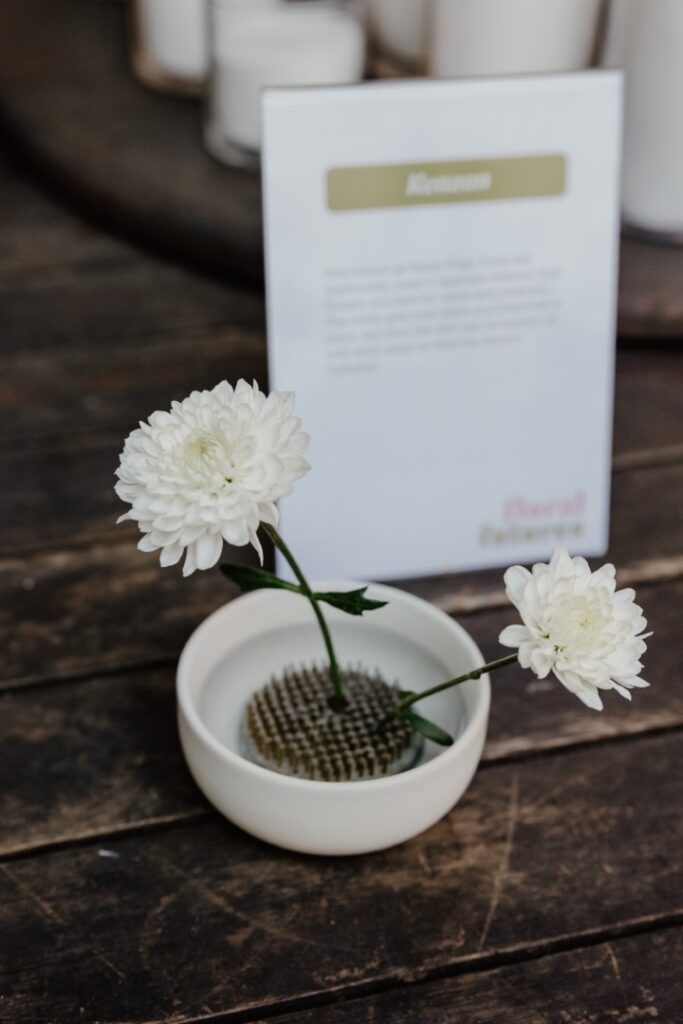
Kenzan flower frogs for sustainable floristry
Kenzan
Also known as flower frogs, these are traditionally used in Japanese ikebana style floristry and best for bases and ceramics. The metal pins hold stems and branches in place, and then the dish can be topped up with fresh water to keep the blooms hydrated.
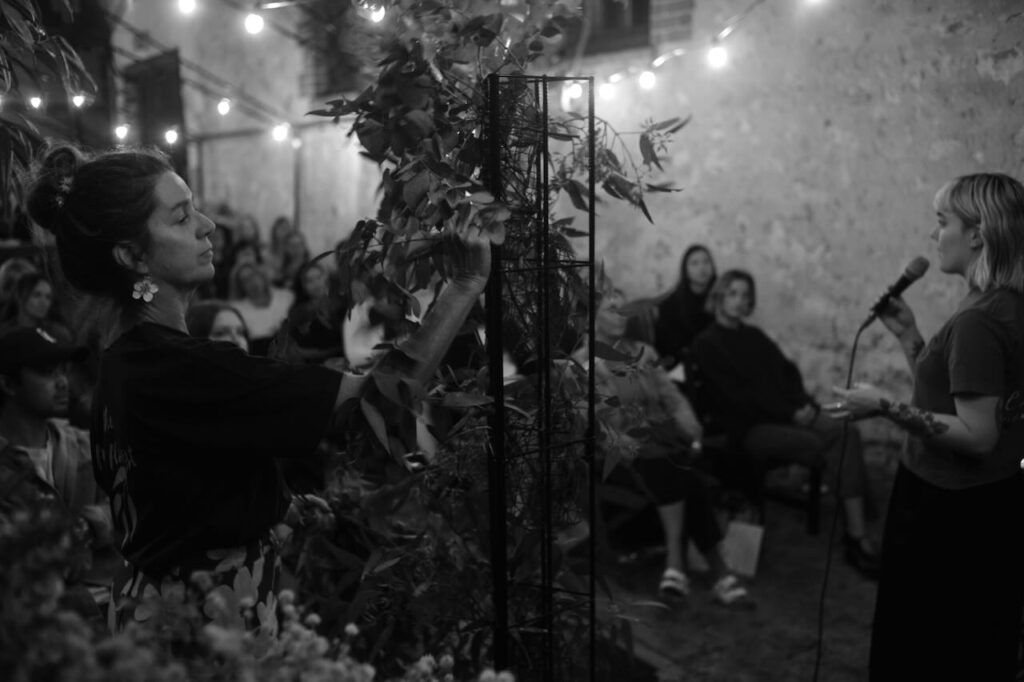
The Floral Futures event, Donna built a flower tower live using sustainable practices, and Tara presented some information about sustainable floristry
THE WHEN
So, what are the next steps?
We hope this event is a catalyst to a growing movement in Perth, and then Australia wide, as we transition away from antiquated products like floral foam. Want to start your own movement in your community? Take this information to your local council and raise awareness, proposing a full ban for events. As a florist create a demand for ethical and sustainable products with your local suppliers.
You’re welcome to use our handy print out to take to your local council.
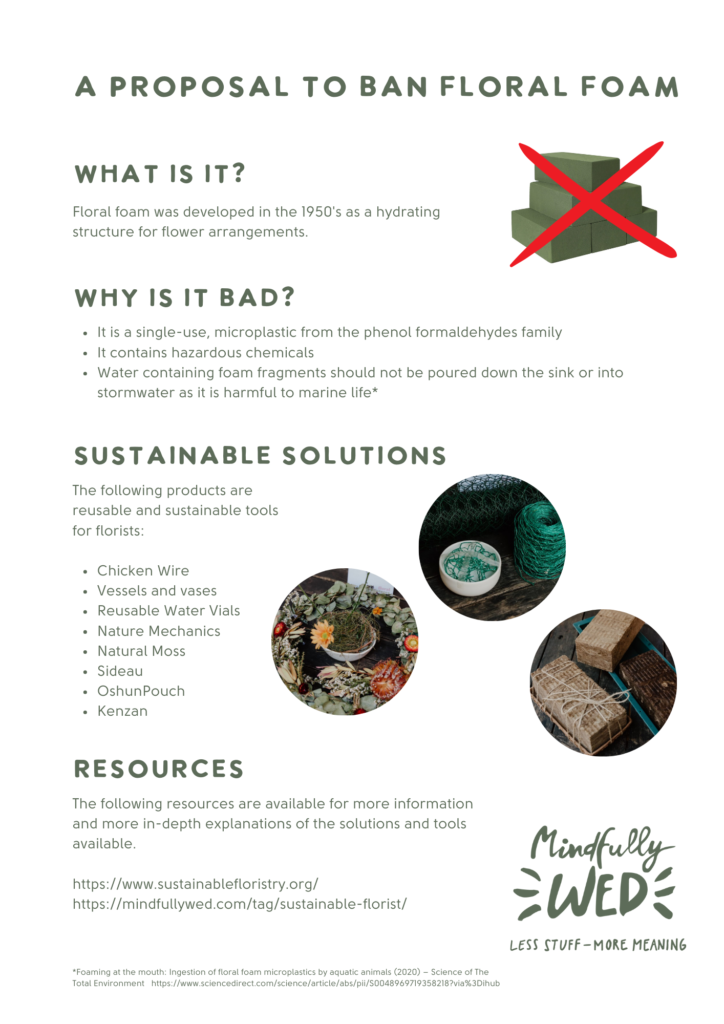
PRINTABLE PDF: Proposal to Ban Floral Foam – Mindfully Wed
Images by Neil Wallace Photos and Red Eclectic

